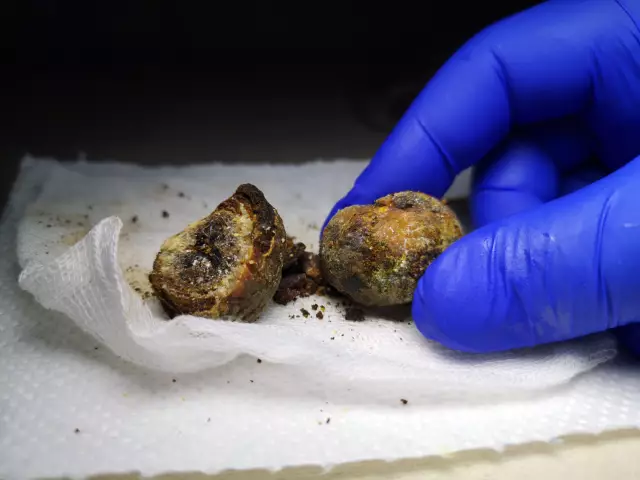- Author Curtis Blomfield [email protected].
- Public 2023-12-16 20:44.
- Last modified 2025-01-23 17:01.
Cholelithiasis is a disease that occurs with the formation of stones in the gallbladder. This pathology is quite common, mostly women are ill.

Among the main pathogenetic mechanisms that provoke this pathology, one should name a violation of fat metabolism, stagnation of bile, as well as its infection. Among the provoking factors of cholelithiasis, older age, the use of certain pharmacological drugs (for example, contraceptives, Ceftriaxone), a certain role is assigned to hereditary factors, obesity, pregnancy, diabetes mellitus, as well as gastric resection, low cholesterol concentration and bile duct dyskinesia. The development of this pathology is also facilitated by allergic and autoimmune processes, inflammation of the gallbladder, irregular meals, high cholesterol in foods, as well as strict diets. Treatment of gallstone disease depends on its stage of development, etiology and course.

Clinical manifestations
Quite often this pathology is asymptomatic. When the stones leave the gallbladder, there is an attack of cholelithiasis, which is manifested by sudden pain in the hypochondrium, nausea and vomiting, dry mouth, itchy skin. Yellowness of the skin and sclera may develop, dark urine and discolored feces are observed.
Cholelithiasis treatment
At the initial stages of the development of this pathology, an active lifestyle is recommended. It is also necessary to normalize body weight and eliminate etiological factors - endocrine disorders, inflammation of the biliary tract, intestinal pathology. What matters is dietary nutrition with the exception of fatty and high-calorie foods.
Treatment of gallstone disease should also include appropriate medications, including the following:
• "Phenobarbital" (to stimulate the formation of bile acids);
• ursodeoxycholic acid - promotes the dissolution of stones;
• peripheral M-cholinolytics (for example, atropine sulfate) - help eliminate pain;
• analgesics that also eliminate pain ("Analgin", "Baralgin", in severe cases - "Promedol");
• myotropic antispasmodics (eg "Papaverine hydrochloride");
• antibiotics.

When cholelithiasis develops, surgery in the form of cholecystectomy is performed most often in the calculous form with severe attacks of biliary colic. Currently, a promising method of surgical treatment is laparoscopiccholecystectomy.
In some cases, shock wave cholelithotripsy can be used for therapy, in which large stones are crushed into smaller fragments. It should be noted that the treatment of gallstone disease should be comprehensive. The volume of therapeutic methods is determined only by the doctor, taking into account the characteristics of the clinical manifestations of this pathology, as well as the degree of obstruction of the bile ducts.






